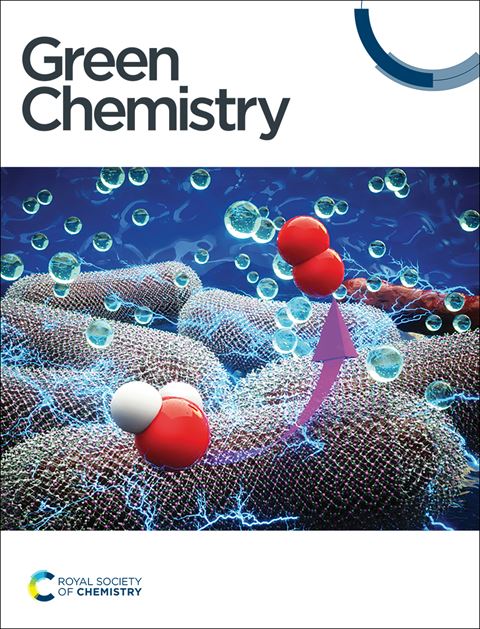A facile phase transformation-mediated mechanochemical assembly strategy facilitates the scale-up synthesis of enzyme@MOF biocomposites†
IF 9.3
1区 化学
Q1 CHEMISTRY, MULTIDISCIPLINARY
引用次数: 0
Abstract
Herein, we present a phase transformation-mediated mechanochemical encapsulation (PTME) strategy for synthesizing enzyme–metal organic framework (enzyme@MOF) biocomposites, which leverages mild mechanical force to drive rapid phase transformation of ZnO into a crystalline MOF, Zn-HHTP. This phase transformation mechanism enables efficient and solvent-minimal enzyme encapsulation under ambient conditions, while the formed Zn-HHTP shows a highly crystalline network with long-range ordered pore channels facilitating catalytic substrate access to encapsulated enzymes. Using lipase as a model enzyme, the resulting biocomposites present higher catalytic activity compared to their well-exploited lipase@ZIF-8 counterpart, which is also synthesized by a traditional mechanochemical approach. Additionally, Zn-HHTP can shield the encapsulated enzymes against environmental stressors, showing enhanced pH- and thermal stability. As the PTME approach only requires 1 min reaction time with the assistance of a trace amount of buffer solution (35 μL), we demonstrate its ability to synthesize highly active biocatalysts on a gram scale. Our work offers a sustainable and rapid mechanochemical method for synthesizing high-performance enzyme@MOF biocomposites, holding great potential for advancing industrial biocatalysis.
一个简单的相变介导的机械化学组装策略促进了enzyme@MOF生物复合材料†的规模化合成
在此,我们提出了一种相变介导的机械化学包封(PTME)策略,用于合成酶-金属有机框架(enzyme@MOF)生物复合材料,该策略利用温和的机械力驱动ZnO快速相变成结晶MOF, Zn-HHTP。这种相变机制在环境条件下实现了高效和溶剂最少的酶包封,而形成的Zn-HHTP显示出高度结晶的网络,具有远程有序的孔通道,有利于催化底物接近被包封的酶。使用脂肪酶作为模型酶,所得的生物复合材料具有更高的催化活性,相比之下,他们已经开发的lipase@ZIF-8对应物,也通过传统的机械化学方法合成。此外,锌- hhtp可以保护被封装的酶免受环境胁迫,表现出更高的pH和热稳定性。由于PTME方法在微量缓冲溶液(35 μL)的辅助下仅需1分钟的反应时间,因此我们证明了其在克尺度上合成高活性生物催化剂的能力。我们的工作为合成高性能enzyme@MOF生物复合材料提供了一种可持续和快速的机械化学方法,具有推进工业生物催化的巨大潜力。
本文章由计算机程序翻译,如有差异,请以英文原文为准。
求助全文
约1分钟内获得全文
求助全文
来源期刊

Green Chemistry
化学-化学综合
CiteScore
16.10
自引率
7.10%
发文量
677
审稿时长
1.4 months
期刊介绍:
Green Chemistry is a journal that provides a unique forum for the publication of innovative research on the development of alternative green and sustainable technologies. The scope of Green Chemistry is based on the definition proposed by Anastas and Warner (Green Chemistry: Theory and Practice, P T Anastas and J C Warner, Oxford University Press, Oxford, 1998), which defines green chemistry as the utilisation of a set of principles that reduces or eliminates the use or generation of hazardous substances in the design, manufacture and application of chemical products. Green Chemistry aims to reduce the environmental impact of the chemical enterprise by developing a technology base that is inherently non-toxic to living things and the environment. The journal welcomes submissions on all aspects of research relating to this endeavor and publishes original and significant cutting-edge research that is likely to be of wide general appeal. For a work to be published, it must present a significant advance in green chemistry, including a comparison with existing methods and a demonstration of advantages over those methods.
 求助内容:
求助内容: 应助结果提醒方式:
应助结果提醒方式:


